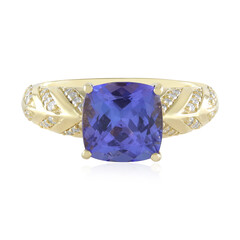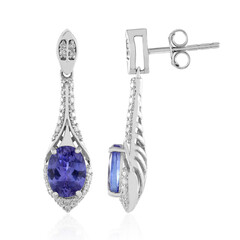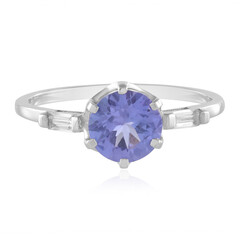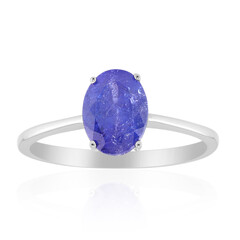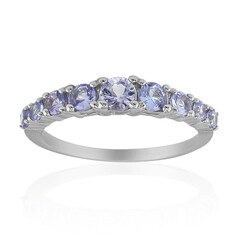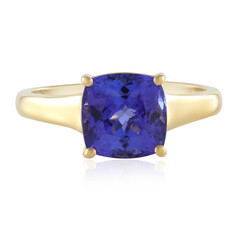Tanzanite

1. Introduction
Immerse yourself in the fascinating world of tanzanite, a gemstone of rare beauty and intense colour found exclusively in Tanzania.
2. Name, Origin and History
Name
The name "Tanzanite" was introduced by the jeweller Tiffany of New York, specifically by Henry B. Platt, and refers to the gemstone's origin: Tanzania.
Origin
Occasionally, crystals of blue zoisite have been found in Pakistan, but the only commercially exploited deposit is located in Tanzania, covering an area of no more than twenty square kilometers.
History
The Tanzanite is associated with the culture of the Maasai: According to legend, nomadic Maasai herders first discovered beautiful blue tanzanite crystals that had lost their typical bronze-gray colour due to a brush fire on the savannah. This tale refers to the fact that tanzanite's colours are often brought out through heating.
Historically, the legendary Scottish geologist Campbell R. Bridges was the first to present tanzanite to the Gemological Institute of America (GIA) for identification. Tiffany & Co. – specifically Henry B. Platt – coined the term "Tanzanite" and introduced the gemstone to the world. While the Carniolan Baron Sigismund Zois von Edelstein (1747 – 1819), after whom "zoisite" is named, was somewhat robbed of his fame, Platt believed that the name "Blue Zoisite" sounded too much like "Blue Suicide," hence he coined the gemstone's name based on its origin.
3. Characteristics
Characteristics
Tanzanite exhibits pleochroism or trichroism, meaning each crystal displays three colours: blue, a purplish red, and a greenish-yellow brown (bronze), with the intensity of each colour depending on the viewing angle. Heating minimizes the bronze tones and enhances the blue, violet, and purple tones. The resulting colour varies due to the natural properties of each crystal. The rarest and most valuable colour is typically a vibrant "sapphire-like" blue under daylight, but the final colour is often a combination of the three trichroic hues, depending on how pronounced the pleochroism is in the finished gemstone. This relates to how tanzanites, where blue predominates over purple or violet, are faceted across the width rather than along the length of the crystal to accentuate the purity of the blue colour.
Tanzanites are typically eye-clean and can exhibit good clarity even under magnification. This is important as high transparency and the absence of inclusions emphasize the magnificent colours of tanzanite, distinguishing this gemstone.
4. Varieties
Tanzanite is primarily known as a blue gemstone, but it is also found in yellow, green, orange, pink, and as a multicoloured gemstone where blue and green blend together.
5. Treatment and Care
A temperature shock can cause damage, so Tanzanite should not be exposed to extreme temperature fluctuations. It is also advisable to avoid cleaning it with ultrasound or steam.



